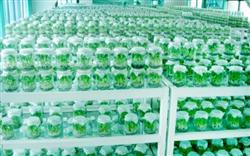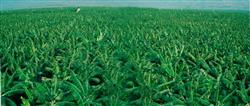Banana ploughing and weeding

1. The function of intermediate ploughing (1) Intermediate ploughing is a measure to ensure good softness and ventilation of banana orchard soil. If there is no loose soil and soil layer is consolidated, the pores are small and the ventilation is poor, which is very disadvantageous to the growth of bananas with fleshy roots. If the root growth is not good, it will directly affect the aboveground growth. Most of the weakening banana plants in the banana orchard are closely related to the poor development of its underground roots. Middle ploughing (deep ploughing) can destroy the structure of soil impermeable layer and create a soil environment with good properties of deep, loose, soft, breathable, drainage and water retention, so as to promote the growth of root system and underground stem and improve the production capacity of banana. Ploughing is particularly important for clay banana plantations. (2) due to the shallow distribution of banana roots, most of them are within 15 cm of topsoil. During the peak period of banana growth, mild intertillage may damage the roots. Therefore, intertillage should be avoided during the vigorous banana growth season (3-11) months. However, when the growth is slow in winter or when the whole garden has been harvested, the next generation of plants are still young. Generally, the middle tillage is once a year, and the suitable period is from the Winter Solstice to before the Beginning of Spring (December-February), because of the low temperature in winter. In the dry weather, the horizontal roots of the topsoil layer have shrunk, and there are few roots injured by ploughing, while the winter sun makes the deep-turned soil fully whitened and weathered, which is beneficial to the growth of bananas in next spring. After the sting (March), the soil can be crushed to level the border surface. (3) the scope and depth of intertillage should be carried out in an all-round way except at a distance of 30cm to 45cm from the banana head. The depth of ploughing is 1525cm in paddy field and 25cm in dry slope or terraced field. After ploughing, a banana garden with mud is required to make a small ridge around the border (5cm to 10cm in height) to keep the mud in the border. At the same time, mid-tillage should be combined with weeding and digging the old banana head (ancestral underground stem) to facilitate the root system to grow and develop around. 2. Weeds in weeding banana garden not only compete with banana plants for nutrients and sunshine, but also are intermediate hosts of diseases and habitats of pests, which can easily lead to the spread of diseases and insect pests. Weeding in banana plantations is usually carried out from April to October, 6 to 10 times a year, especially from June to July, twice a month. Weeding should be carried out on a sunny day. In recent years, due to tight labor and high cost of manual weeding, many banana professional households use chemical herbicides to control weeds. If the use of gram Wuzhuan (paraquat), glyphosate and other drugs to control weeds, the effect is good. General gram Wuzhuan is mostly used for shallow roots, no underground stem, broad-leaf weeds, every 667 square meters (mu) with 20% grams of turnip 150 kg 200ml, for water 750 kg 1000 kg; glyphosate is mostly used for deep roots. There are annual and perennial weeds with underground stems, using 41% glyphosate 300 kg 360 ml for every 667 square meters and 75 kg for water. If there are the above two kinds of weeds in the banana garden, it can be used alternately or mixed with glyphosate, and the weeding effect is more significant. Be careful not to spray on banana buds or dried bananas or leaves, otherwise banana plants and sucking buds will wither and yellow, light growth will be inhibited and serious death. Therefore, spray as far as possible from the banana plant at a certain distance, the spray head down, it is best to carry out in the quiet wind.
- Prev

What are the key points of banana tissue culture seedling cultivation technology?
The test-tube seedlings usually have no diseases and insect pests, grow uniformly, and are easy to transport, which is conducive to the large-scale popularization of improved varieties. At present and in the future banana, banana powder, banana dragon tooth, even plantain widely used. But the test-tube seedling stage is tender and weak, the resistance is poor, susceptible to flower leaf heart rot and other diseases and insect pests, and easy to hurt or die seedlings when planted in bad weather.
- Next

Key points of fertilization techniques for high-quality planting of banana
1. Suitable planting density. It is suitable to plant 120 to 130 plants per mu, the yield is higher, and the appearance quality of banana is better. 2. Suitable seedling age and planting time. The suitable seedling age is 9-10 leaves, and the planting period is in the middle and late March. In this way, Qilei can be harvested in mid-late October and in January-February of the following year. ...
Related
- Moge, come on! The staff of the peasant association in the producing area of cantaloupe were frightened when the crowd gathered.
- Causes and Solutions of low Fruit setting rate of Apple
- Symptoms and control measures of passion fruit virus disease
- Fruit growing lesson: how do apple orchards keep high yields?
- Can you build orchards in the mountains? What are the pros and cons?
- How to manage the coloring period of Crisson grape?
- This paper introduces the processing technology of two kinds of fig products.
- How much is a month for retired teachers in rural areas by 2020?
- How can strawberry planting increase sugar content? We should pay attention to management in many aspects.
- What are the cultivation techniques on how to improve the yield of golden fruit?

